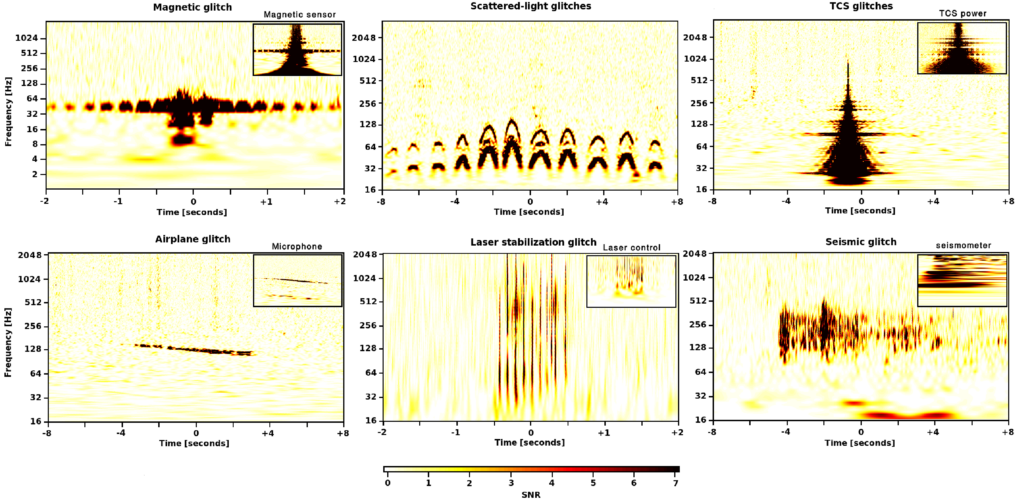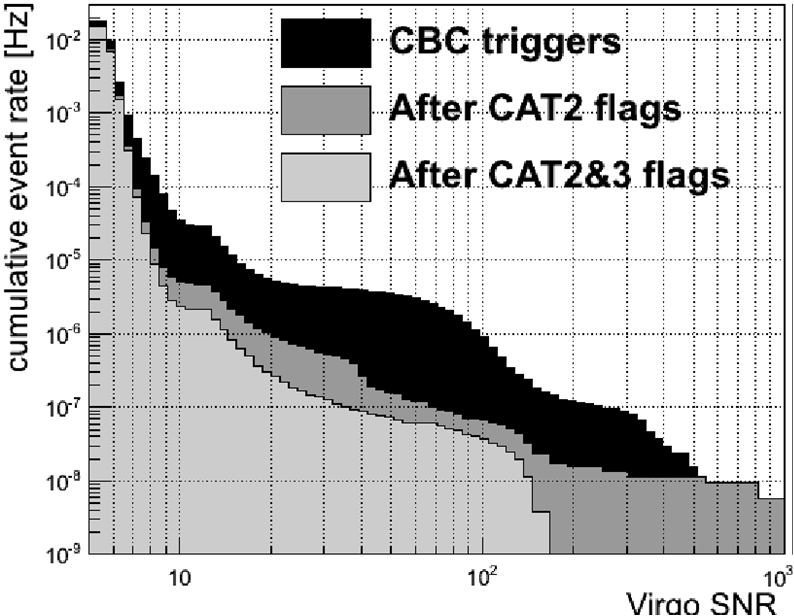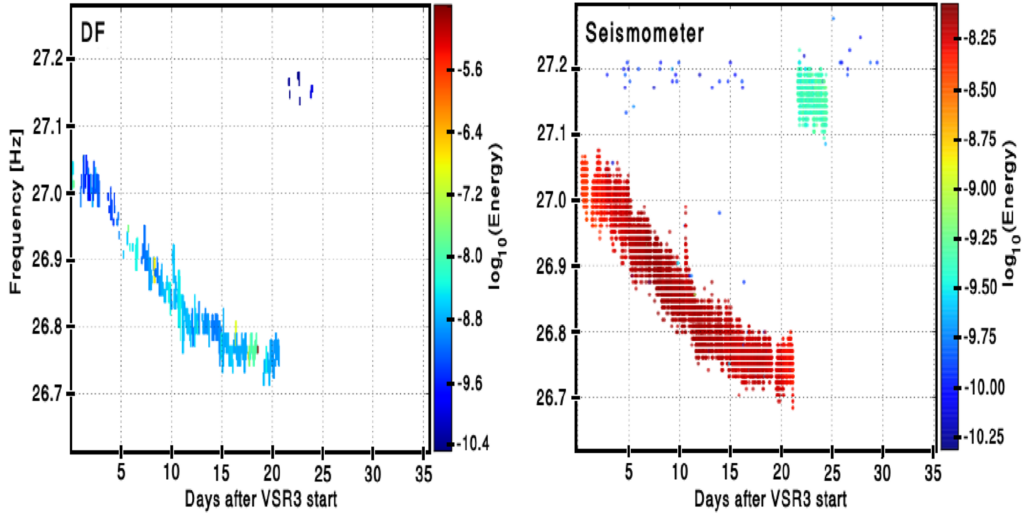A world-wide network of gravitational-wave detectors (LIGO, Virgo, GEO) is searching for gravitational waves (GW) emitted by astrophysical sources. To observe the tiny ripples in space-time produced by gravitational waves, these detectors use laser interferometers able to accurately measure the distance between mirrors hung in a vacuum and isolated as much as possible from their environment. The change in distance between the mirrors caused by a gravitational wave is very small; smaller than the size of an atomic nucleus over the several-kilometer length of the interferometer’s arms. The sensitivity of such complex instruments is limited by various types of noise. Seismic, acoustic and electromagnetic disturbances near to the interferometers or noises arising from the detector controls can produce bursts of noise (also called noise transients or “glitches”) which can make it more difficult to detect gravitational waves. The use of several detectors in the LIGO-Virgo-GEO network allows scientists to identify and to eliminate many of these noise transients by requiring a coincident detection. A noise transient is local to a single detector but a gravitational wave should be seen by several detectors in the network. Requiring a “coincident detection” means requiring that the signal is present in more than one detector in the network.

Time-frequency plot of a noise transient in the Virgo detector during a scientific run, which could not be rejected by data quality investigations
Even if coincidence is a powerful way of eliminating noise transients from our searches, several of them can still be coincident in multiple detectors simply by chance. These remaining coincident noise transients reduce our ability to detect bursts of gravitational waves from astrophysical sources such as colliding black holes or supernovae. To increase our sensitivity and allow us to see further into the universe, we need to eliminate those noise transients from the data. Since there are many different noise sources in each detector, identifying and discarding noise transients in the gravitational-wave detector data is an arduous task which requires a detailed characterization of each detector and its environment. Most of this work consists in tracking down various sources of noise (“noise hunting”). The result of these investigations is either the mitigation of the noise source or the development of a set of data quality (DQ) flags which are lists of time segments where data quality is considered as degraded — that is when noise transients have the greatest chance of occurring. For the July 2009 – January 2010 data set (known as the VSR2 scientific run), the DQ flags were able to remove about 70% of the strongest Virgo noise transients and allowed an increase by about 30% of the volume of the universe in which coalescing neutron stars and black holes could be detected — a significant increase which demonstrates the importance of noise hunting and DQ flags development.

These are the time-frequency visualizations of the main types of noise transients observed in the Virgo detector. Glitch families are identifiable by their unique time-frequency morphologies. When identified, the glitch present in the environment monitoring channel is shown in the inset plot. The first plot shows a power-line glitch also detected by the magnetometers. The second map shows a series of glitches caused by scattered light induced by seismic activity. The third glitch is caused by a TCS instability (the TCS is the Thermal Compensation System used in Virgo to prevent mirror deformations due to high-power laser beam). The fourth plot presents an airplane event with a clear Doppler effect. The fifth event is due to a glitch in the laser stabilization loop. The last glitch with an undefined shape is due to a seismic event converted to higher frequencies.
Searches for gravitational waves from continuous sources (such as rotating neutron stars) can be spoiled by noise at specific frequencies — noise frequency lines — due to various environmental noise sources. Real-time monitoring and follow-up investigations of potential noise sources generating frequency lines is thus essential. NoEMi is a tool developed in the Virgo collaboration for this purpose. It allowed scientists to identify the source of a noise frequency line which affected the sensitivity of the Virgo detector near the frequency of the Vela pulsar (22.38 Hz). Despite this noise frequency line discovered lately, scientists were able to set an interesting upper limit on the contribution of GW emission to the Vela pulsar spin-down.

Effect of the Virgo data quality flags on events produced by one of the searches for gravitational waves emitted by Compact Binary Coalescence (CBC). The full VSR2 data sample was considered. Double-coincident LIGO-Virgo events were used. It shows the event rate as a function of a threshold set on the strength of the event seen in Virgo before and after applying the Virgo data quality flags. CAT2 flags identify noisy time periods for which the noise mechanism is quite well understood. CAT3 flags identify noisy time periods that are less understood.
Observing gravitational waves in coincidence with electromagnetic emission from an astrophysical object will allow us to gain a deeper understanding of the extreme processes involved in the generation of gravitational waves, as well as an increased confidence in signal detection. Thus, our network of detectors sends “real-time” alerts to guide astronomical telescopes to interesting locations in the sky in the hope of catching the event as it happens. This requires GW searches to analyse data and to identify noise transients with low latency. The goal is to deliver events to telescopes a few minutes after the waves reach our detectors. However, we do not want noise transients to trigger the pointing of telescopes. Beginning with the VSR2 scientific run, Virgo scientists have been able to identify various types of noise transients and have set up an online software architecture which produced, with a time delay of about 30s, more than 90 DQ flags. These DQ flags have been used to discard false events, thus preventing us from wasting telescope observing time. This is an important step towards generating very low latency data quality information for use by the next generation of detectors, like Advanced Virgo and Advanced LIGO. These future interferometers plan to issue prompt alerts for joint searches with astronomical telescopes on the ground or in space.

Frequency plot produced by NoEMi, showing the noise frequency lines detected in the output signal of the interferometer and in one seismic environment monitoring channel.

